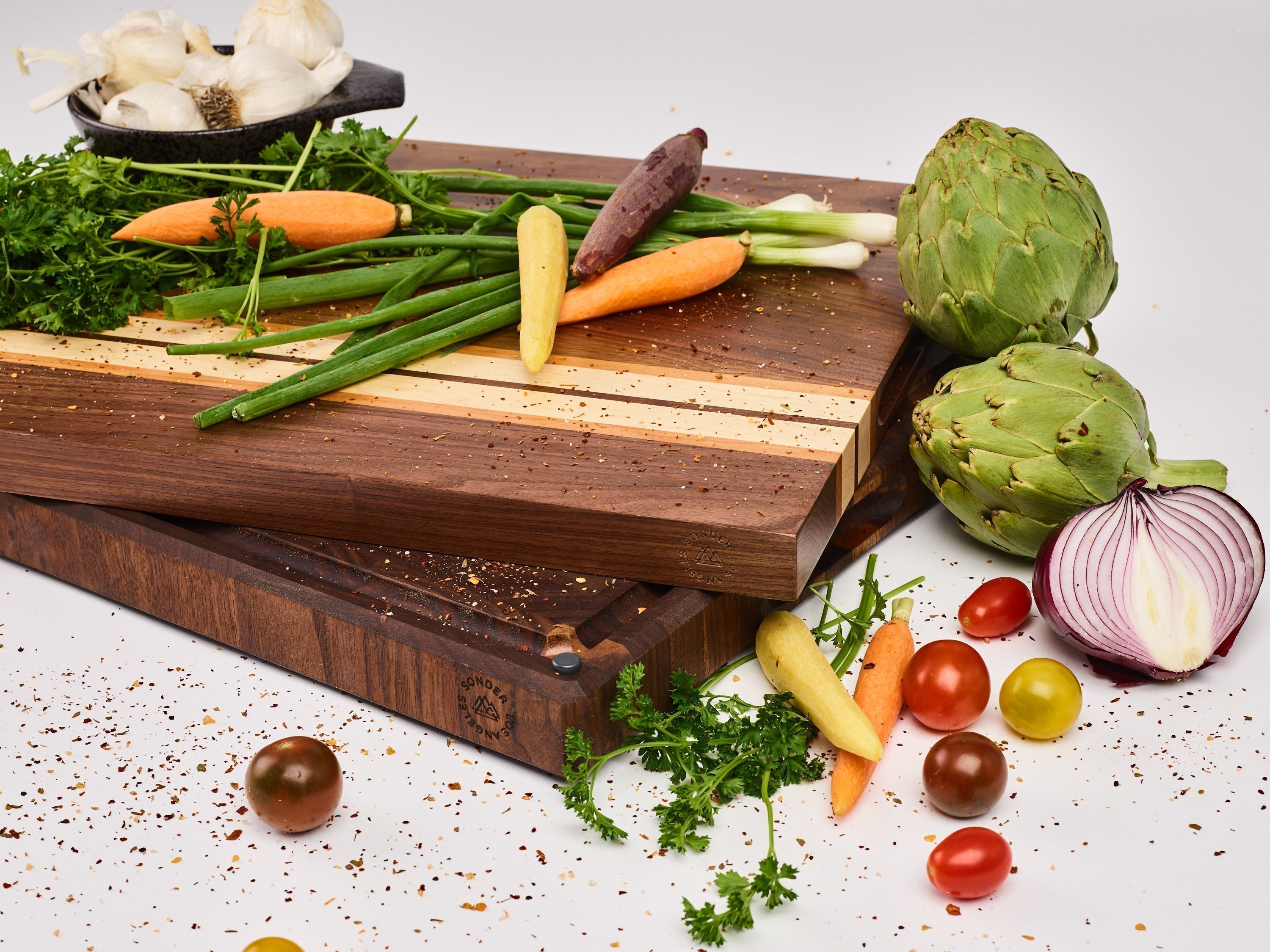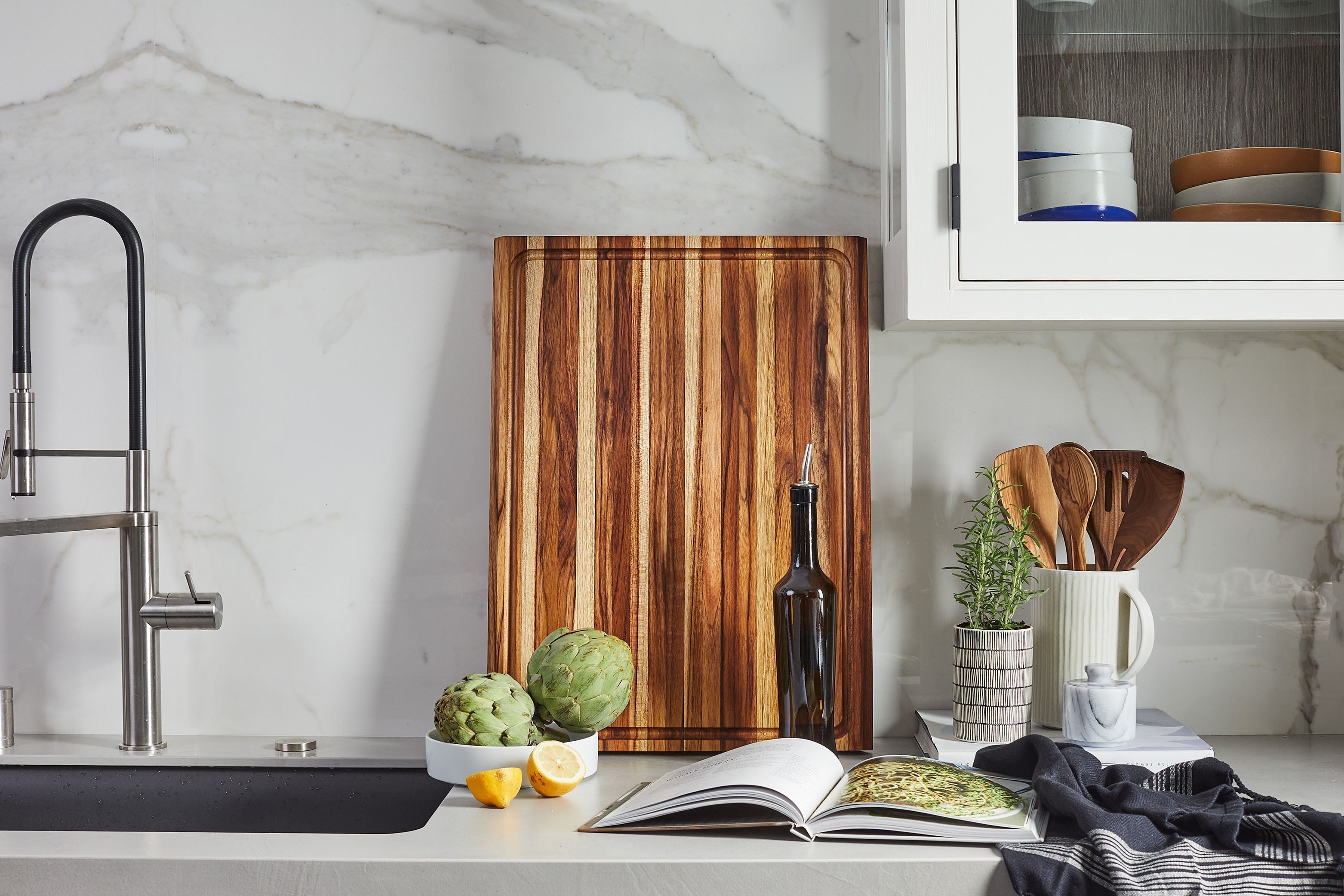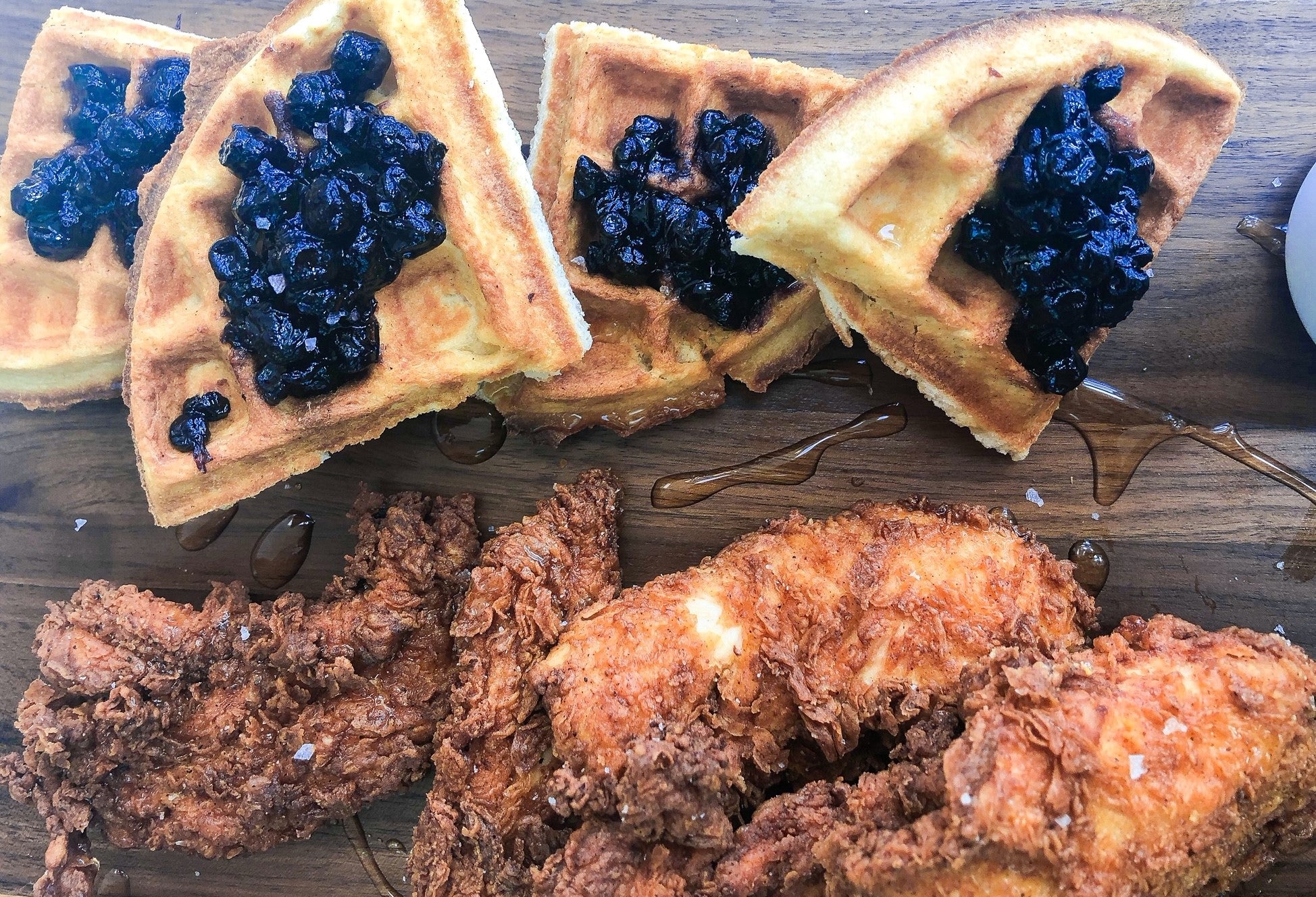
End Grain vs. Edge Grain Cutting Boards...What’s the Difference?
Deciding to buy a wooden cutting board is a big step, and with great buying power, comes great responsibility. We’re just kidding...buying a cutting board should be fun! It can feel overwhelming given the vast array of information out there, but rest assured, it’s quite simple.
TL;DR The Quick Comparison
|
Feature |
Edge Grain Cutting Boards |
End Grain Cutting Boards |
|
Wood Orientation |
Horizontal (side grain) |
Vertical (end grain) |
|
Appearance |
Striped grain |
Checkerboard or brick pattern |
|
Knife-Friendliness |
Less gentle on knives |
More gentle on knives |
|
Knife Marks |
More visible |
Less visible |
|
Durability |
Durable |
Extremely durable |
|
Weight |
Lighter |
Heavier |
|
Maintenance |
Lower maintenance |
Higher maintenance |
|
Price Point |
More affordable |
More expensive |
|
Best For |
Every day tasks and serving |
Heavy chopping and pro knives |
What is an Edge Grain Cutting Board?

Edge grain cutting boards (also known as side grain or long grain) are made by bonding together carefully selected strips of wood, aligned along their long edges. The result? A sleek, striped look that highlights the natural beauty of the wood grain.
While not quite as forgiving on your knives as end grain, edge grain boards are still much better than plastic, glass, or bamboo options. They’re lighter, more affordable, and easier to maintain—making them a great choice for everyday home cooks.

Benefits of Edge Grain Cutting Boards
-
Durable: Lasts years longer than plastic and bamboo.
-
Low maintenance: Requires less frequent oiling.
-
Stain resistant: Less susceptible to moisture, which can lead to staining.
-
More affordable: Edge grain cutting boards require less labor to make.
-
Lighter: Weighs less than end grain cutting boards, which is very important to keep in mind if you’re looking to use your board primarily for serving.
-
Visually striking: This type of cut reveals the wood’s beauty by showing off long, uninterrupted grain patterns.
Cons of Edge Grain Cutting Boards
-
More susceptible to knife marks: All wood cutting boards will show knife marks. However, knife marks are more visible on edge grain boards than end grain boards.
-
Less gentle on knives: Each knife cut goes through the wood fibers, rather than between them; however, they’re much easier on knives than plastic, glass, and bamboo.
What are Edge Grain Cutting Boards Ideal For?
-
Every day, light to medium use.
-
Moisture-heavy chopping and cutting (think big leafy greens – kale, mustard greens and juicy fruits like watermelon, pineapple, citrus).
-
Carving and slicing meat with high oil content.
-
Making and rolling out dough for pizza, pasta, pies, etc.
-
Serving, when the grocery store deli tray won’t cut it at parties anymore.
Shop our edge grain cutting boards
What is an End Grain Cutting Board?

An end grain cutting board (also known as end cut or end block) is made by arranging wood so that the ends of the grain face upward. This reveals a beautiful checkerboard or brick pattern and makes the board extra durable. Because the knife cuts go between the wood fibers instead of through them, end grain boards are gentler on your knives—and they can even self-heal small cuts, because the fibers close back up after you’re done slicing and dicing.
Benefits of end grain cutting boards include their durability, knife-friendliness, and unique appearance. They’re typically preferred by chefs, serious home cooks, and anyone who wants a board that’ll last many years with proper care.

Benefits of End Grain Cutting Board
-
Durable: Can withstand heavy-duty carving and chopping. Did someone say brisket?
-
Gentler on knives: Each knife cut goes between the wood fibers, rather than through them, also making these boards more resistant to scratches and knife marks.
-
Self-healing: These fibers close back up after the knife exits, keeping your knife’s edge sharper for longer.
-
Heavier: Compared to edge grain, these boards weigh more, which means less movement while you’re dicing away.
-
Visually striking: This type of cut reveals the unique character of the wood rings and grain details, something you won’t find in edge grain cutting boards.
Cons of End Grain Cutting Boards
-
Requires a little extra TLC: End grain cutting boards tend to be thirstier than edge grain boards and require more frequent oiling.
-
More expensive: End grain boards typically cost more due to the complexity and time needed to craft them.
-
Heavier: Weighs more than edge grain boards, and may come as a shock if you’re used to plastic or bamboo boards.
What are End Grain Cutting Boards Ideal For?
-
Heavy-duty chopping and butchering; no, seriously, like Julia Child level heavy chopping.
-
Less moisture-intensive tasks like prepping raw meat and cruciferous veggies.
-
Carving large pieces of meat such as brisket, turkey, ham, ribs, pot roast, etc.
-
Use with professional or high-end knives (it’ll cut like buttah!)
Shop our end grain cutting boards
Caring for Your Wood Cutting Board (Yes, You Gotta Oil It)
No matter which style you choose, wood cutting boards require some TLC. Here's the short version:
-
Oil regularly – Use a food-safe mineral oil to hydrate and protect the wood.
-
Keep it dry – Never soak your board or put it in the dishwasher.
-
Clean gently – Use mild soap (without alcohol) and warm water after each use.
-
Disinfect naturally – Use lemon juice and salt for deep cleaning.
Want the full details? Check out our Cutting Board Care Guide.

